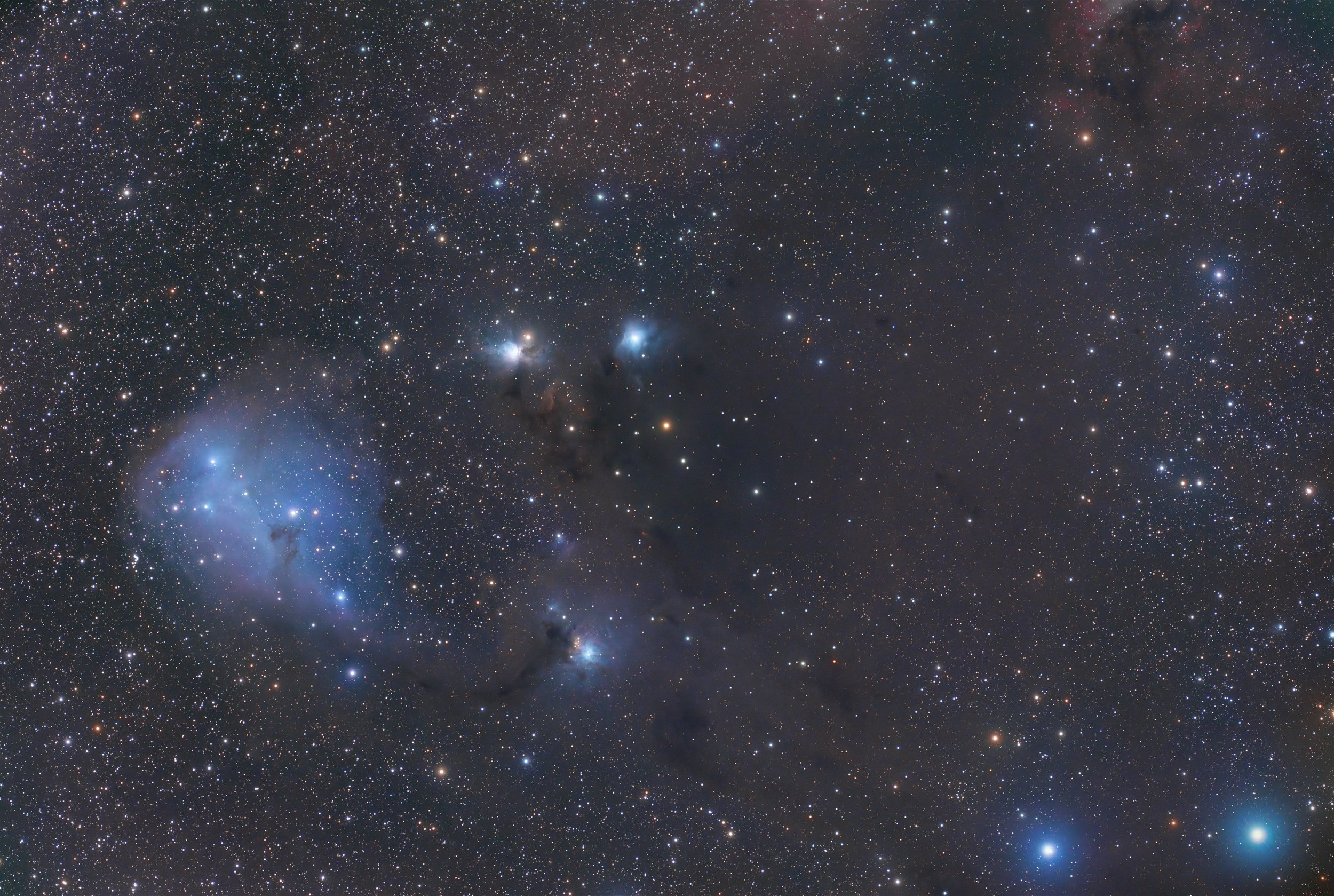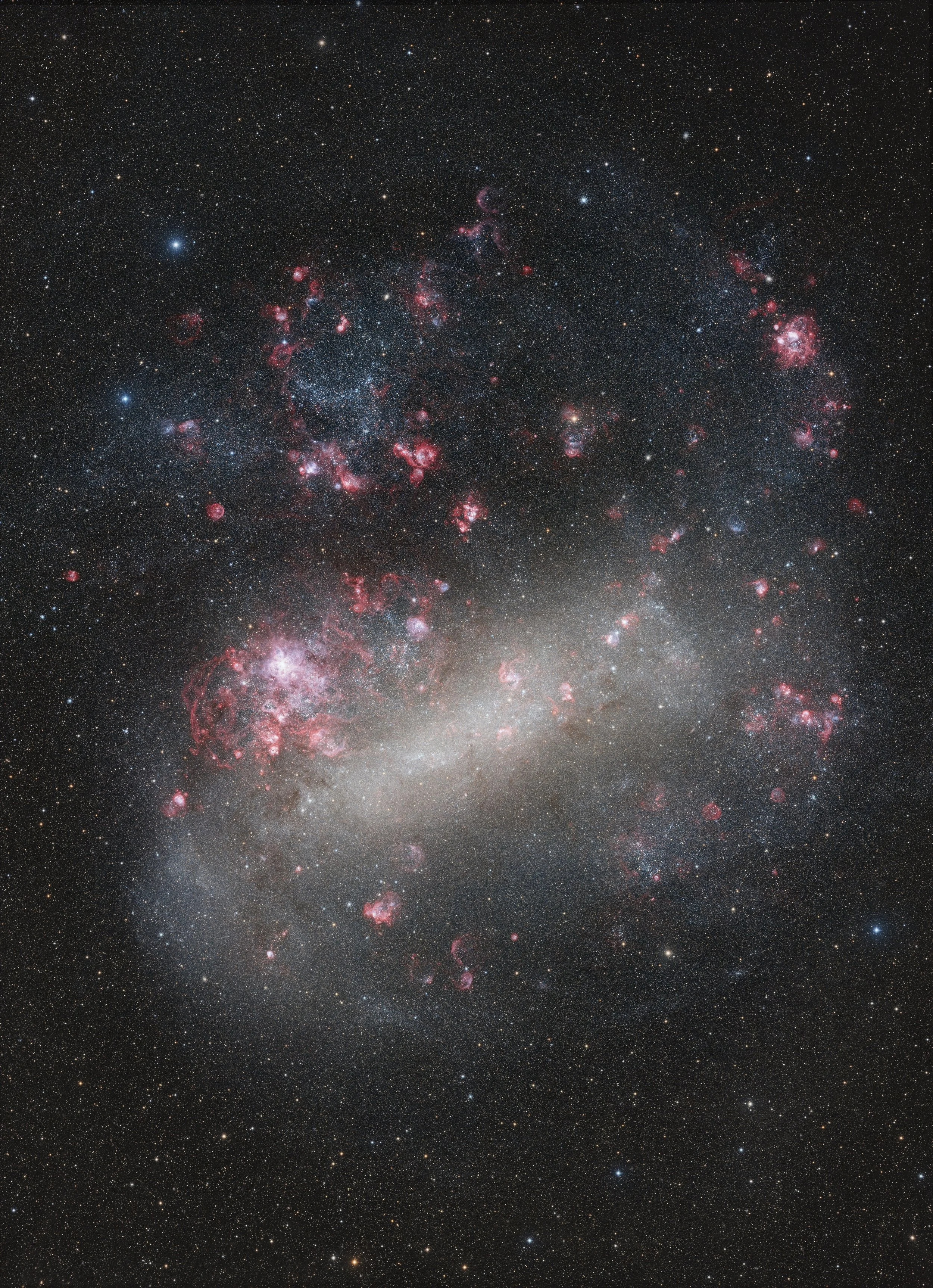
AAPOD2 Image Archives
Dusty Cloud -The Large Magellanic Cloud
The Large Magellanic Cloud (LMC), a satellite galaxy of the Milky Way, unfolds in stunning detail in this meticulously crafted two-panel mosaic, captured by the ShaRA team using the T4 telescope at Chilescope. This wide-field image, taken with a 100mm f/2 Nikon lens, showcases the LMC’s sprawling star-forming regions, glowing nebulae, and intricate networks of cosmic dust.
By employing seven different filters (LRGB + Ha, OIII, and SII), the team has revealed both the natural starlight of the LMC and the faint, ionized gas structures sculpted by intense stellar winds and supernova explosions. The Hydrogen-alpha (Ha) regions glow deep red, marking sites of active star birth, while Oxygen-III (OIII) in blues and Sulfur-II (SII) in golds unveil the turbulent interstellar medium shaped by dying stars.
Spanning roughly 14,000 light-years, the LMC is home to some of the most famous celestial objects in the southern sky, including the Tarantula Nebula (NGC 2070)—one of the most active star-forming regions in the Local Group. The mosaic also captures numerous supernova remnants, star clusters, and gaseous filaments, offering a breathtaking glimpse into the life cycle of stars on a galactic scale.
With nearly 32 hours of total exposure time collected over 20 nights, this image represents an extraordinary dedication to astrophotography. The combination of wide-field optics, deep integration, and precise post-processing has resulted in one of the most detailed amateur captures of the LMC, highlighting the galaxy’s beauty and its dynamic role in the cosmic ecosystem.


